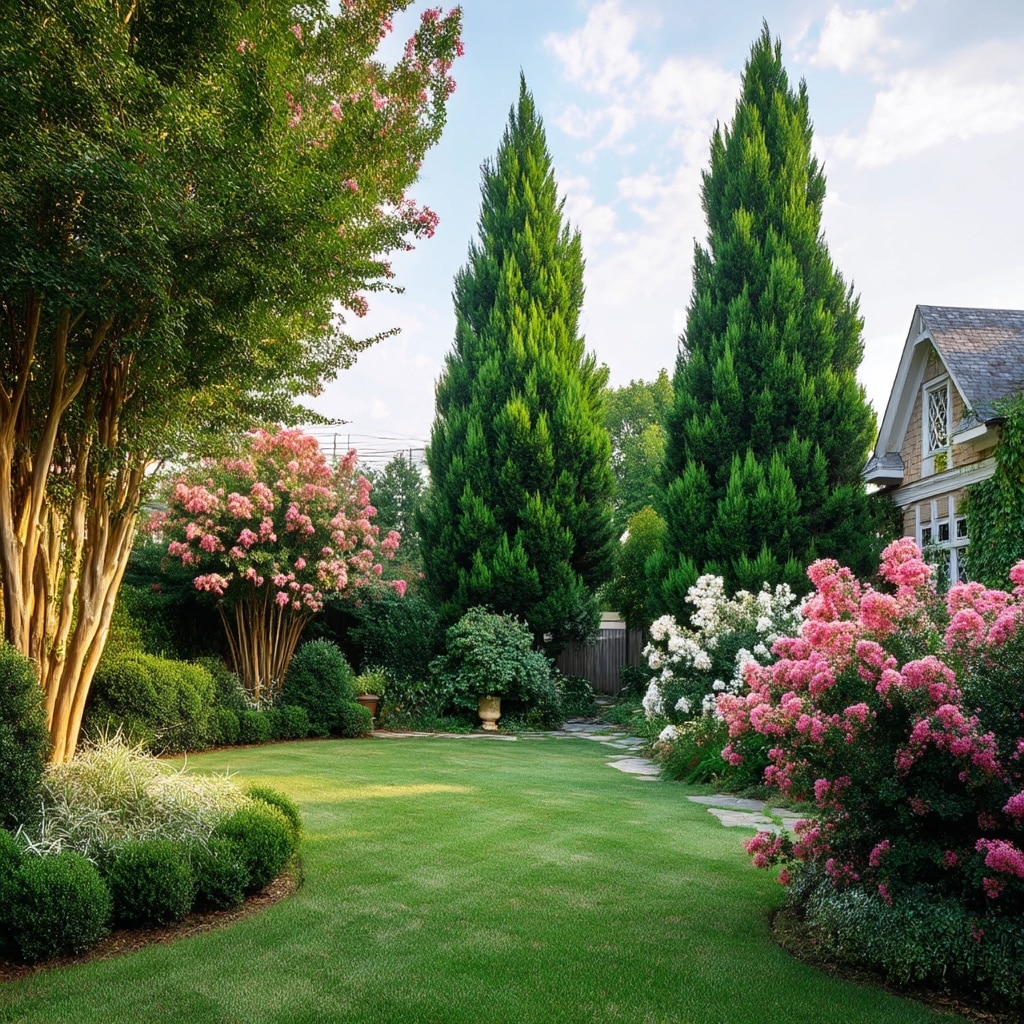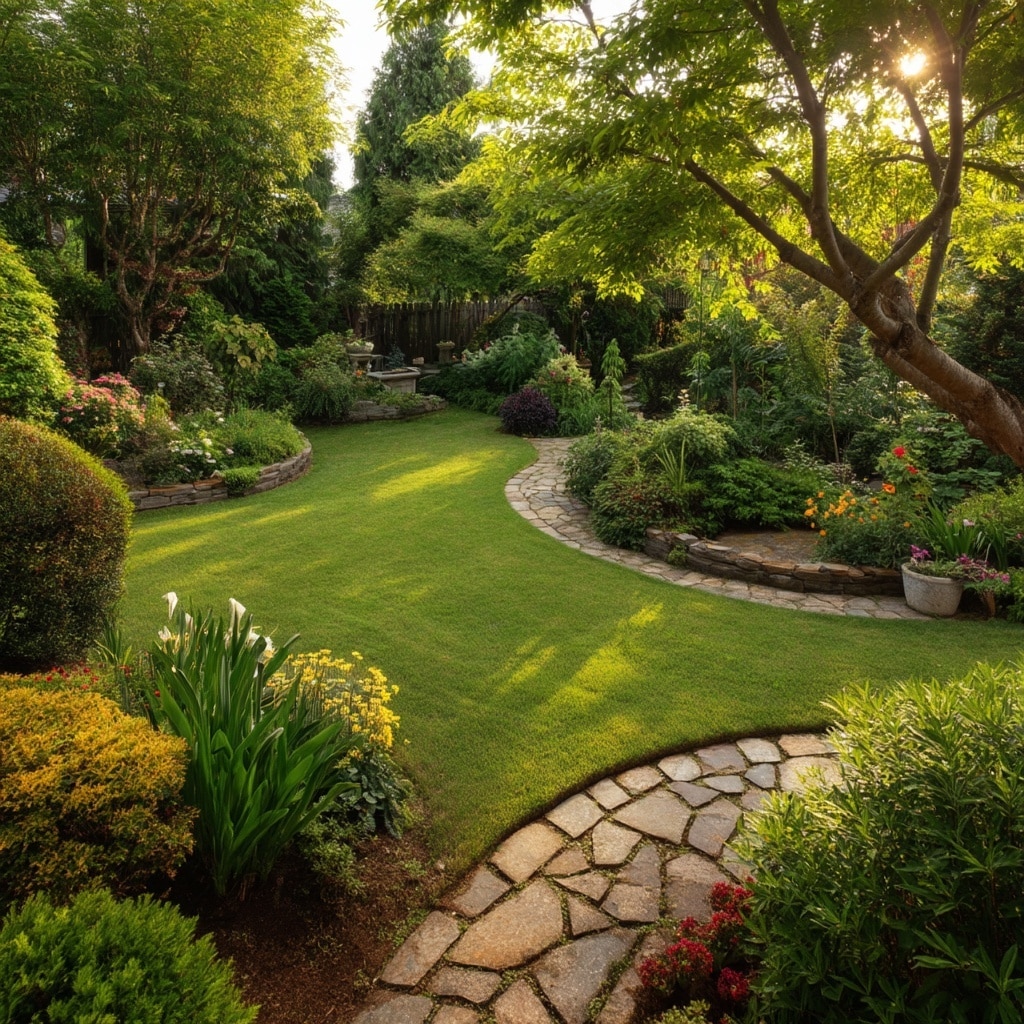When it comes to backyard landscaping, creating a space that’s both beautiful and functional doesn’t have to feel overwhelming. Whether you’re starting with a blank canvas or refreshing an existing yard, the right ideas can turn your outdoor area into a personal retreat. Many homeowners find themselves staring at an open patch of grass wondering where to begin—but with a little inspiration and some practical tips, you’ll be amazed at what’s possible. In this guide, we’ll explore eight standout landscaping ideas that blend creativity, simplicity, and timeless design—all to help you craft a backyard that reflects your personality and enhances your home’s curb appeal.
Table of Contents
1.Use Curved or Rounded Lines
In backyard landscaping, the shapes you choose can dramatically affect the overall flow and feel of your space. Instead of defaulting to rigid, straight lines, consider incorporating curved edges into pathways, garden beds, and patio borders. These softer shapes create a more natural, inviting appearance and can make even a small yard feel expansive and organic.
A winding stone path through a flower bed or a gently arched lawn border can guide the eye and add visual movement. For a clean finish that’s still flexible, many homeowners opt for metal or rubber landscape edging that bends easily to form sweeping curves. Bonus tip: green-colored edging materials tend to blend seamlessly into grassy areas, keeping the focus on your garden features rather than the borders themselves.
Curves not only soften the look of your backyard—they also help break up large open areas into cozy, usable zones. Whether you’re defining a seating nook or outlining a planting bed, rounded lines can bring a professional polish to your backyard design.
2. Anchor Corners with Larger Trees
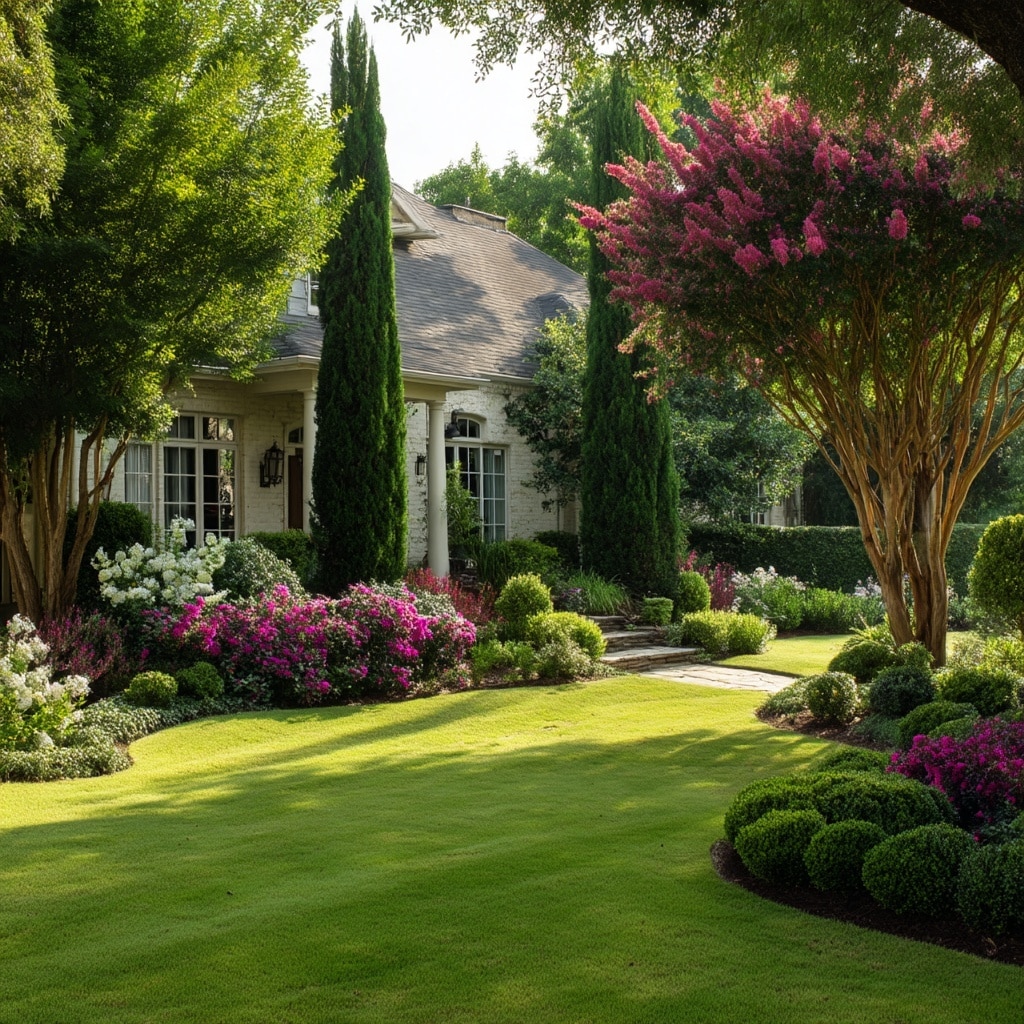
Strategic tree placement is a game-changer in backyard landscaping—especially when it comes to defining space and creating privacy. One of the smartest ways to give your yard a sense of structure is to anchor the corners with larger trees or tall shrubs. Not only do they frame the space visually, but they also offer shade, wind protection, and a lush backdrop for smaller plants or focal points.
Evergreens are a popular choice for corner planting because they provide year-round color and coverage. Pairing them with seasonal bloomers like Crepe Myrtles or flowering dogwoods can soften the look while adding interest throughout the seasons. These taller elements also help to balance out the height differences between your house and garden, tying everything together.
Another benefit? Trees planted in corners naturally draw the eye outward, making your backyard appear deeper and more expansive. They also create a perfect setting for features like fountains, benches, or raised flower beds placed in front for contrast.
3.Add Interest with Garden Pots, Urns, and Statuary
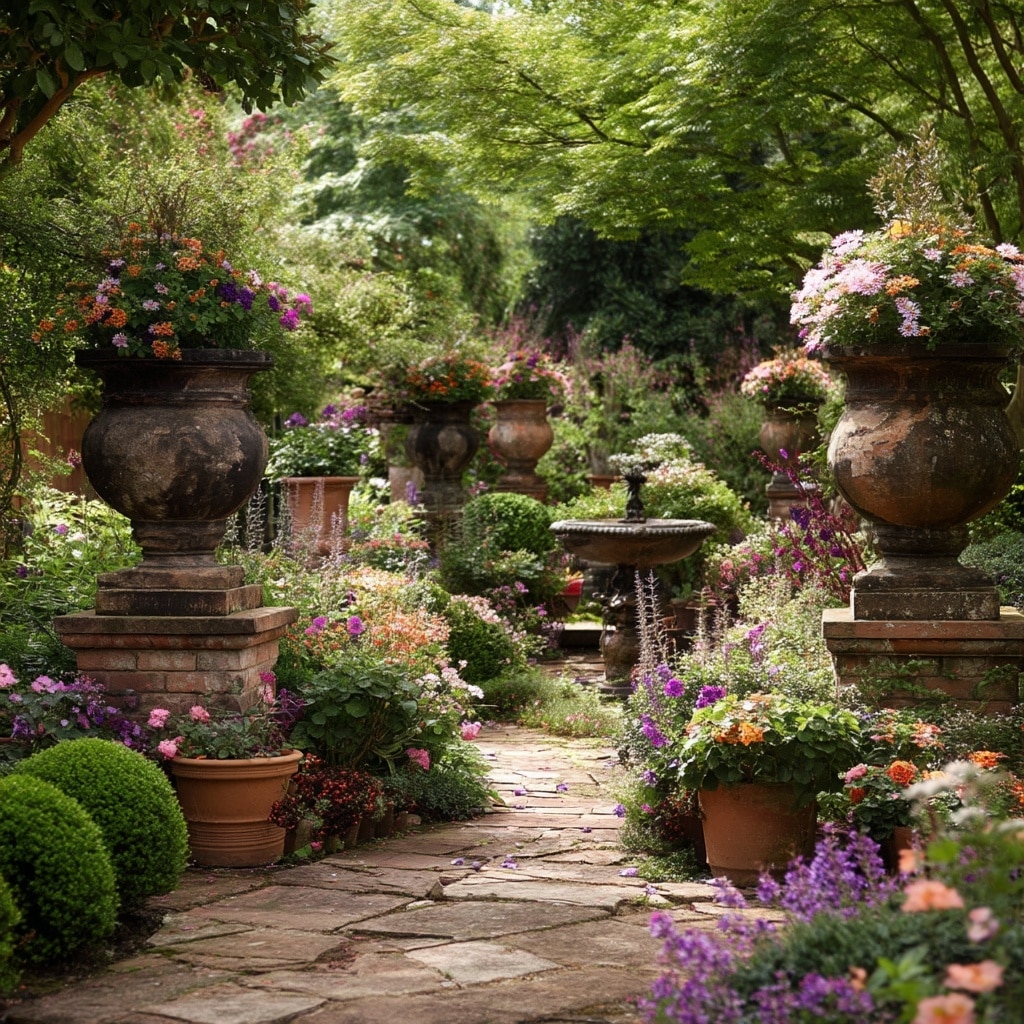
To elevate your backyard landscaping, think beyond plants. Decorative elements like garden pots, urns, and statuary can bring personality and texture to your outdoor space, acting as visual anchors or focal points among the greenery.
Large ceramic or stone pots filled with vibrant flowers can brighten dull corners or line walkways to add symmetry. Urns with bold shapes or vintage designs are perfect for flanking entryways, patios, or staircases. Placing a cement finial, a sculptural birdbath, or even a weathered statue among your shrubs can create a timeless, curated look that feels like part of the landscape.
These features don’t just add charm—they also offer seasonal flexibility. Swap out plantings in pots with the seasons, or move accents around as your yard evolves. By mixing materials and heights, you can create layers of interest that invite guests to linger and explore.
Just a few well-chosen pieces can completely transform a plain garden bed into a dynamic, elegant display.
4.Use Wire Furniture as Props
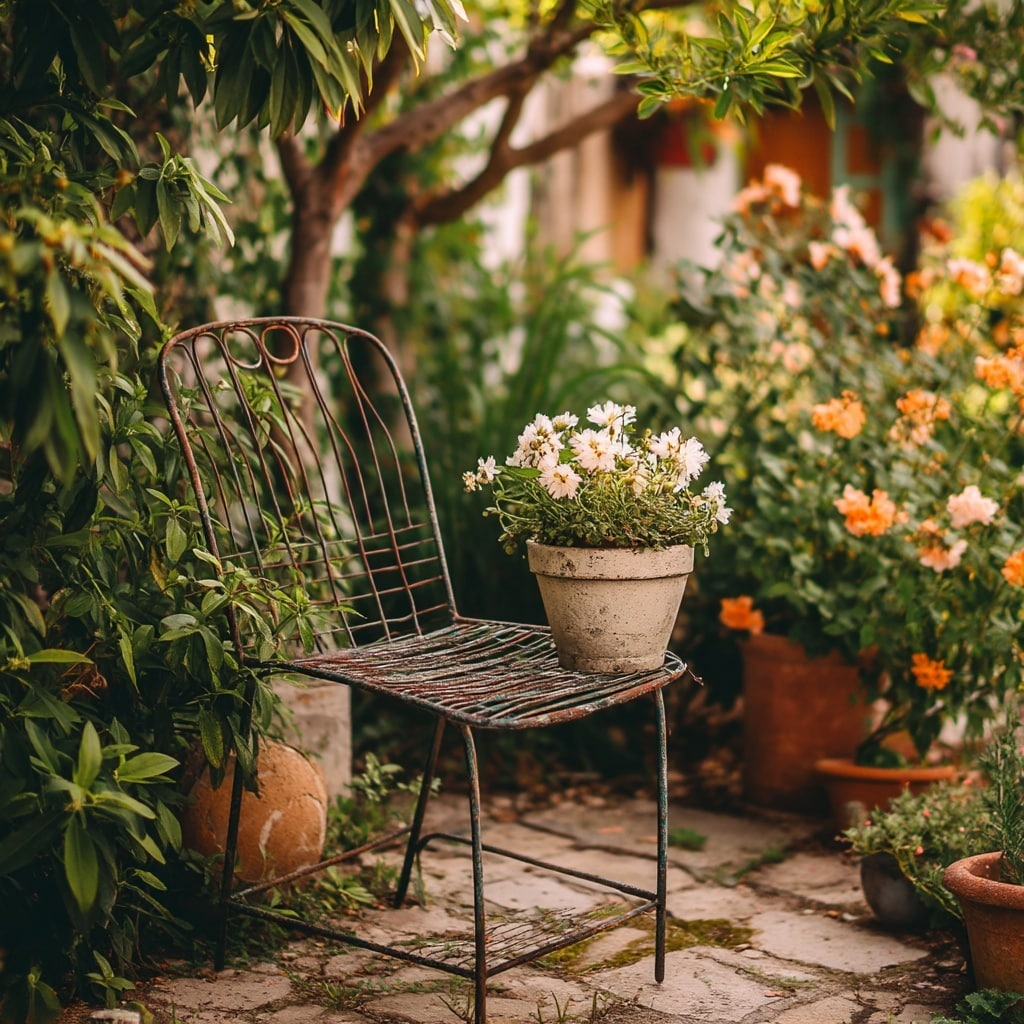
Repurposing vintage or wire furniture is a clever and charming way to enhance your backyard landscaping without spending a fortune. Instead of sticking to the usual plant stands or shelving units, consider using items like metal chairs, benches, or even old bistro tables as display platforms for your favorite pots and planters.
A rusted iron chair holding a mossy urn, for instance, can become a beautiful focal point nestled within a flower bed. The curved lines of wire furniture add a delicate, romantic vibe to your space, and their open frames keep things airy rather than bulky.
Using furniture this way also adds height variation to your garden design—a key principle in creating balance and depth. Elevating plants brings them closer to eye level and breaks up horizontal lines, especially in flat yards.
Whether you’re going for a shabby-chic style or a more whimsical cottage garden look, wire furniture props bring history and texture into your landscape in a subtle, creative way.
5.Include Whimsical Accents
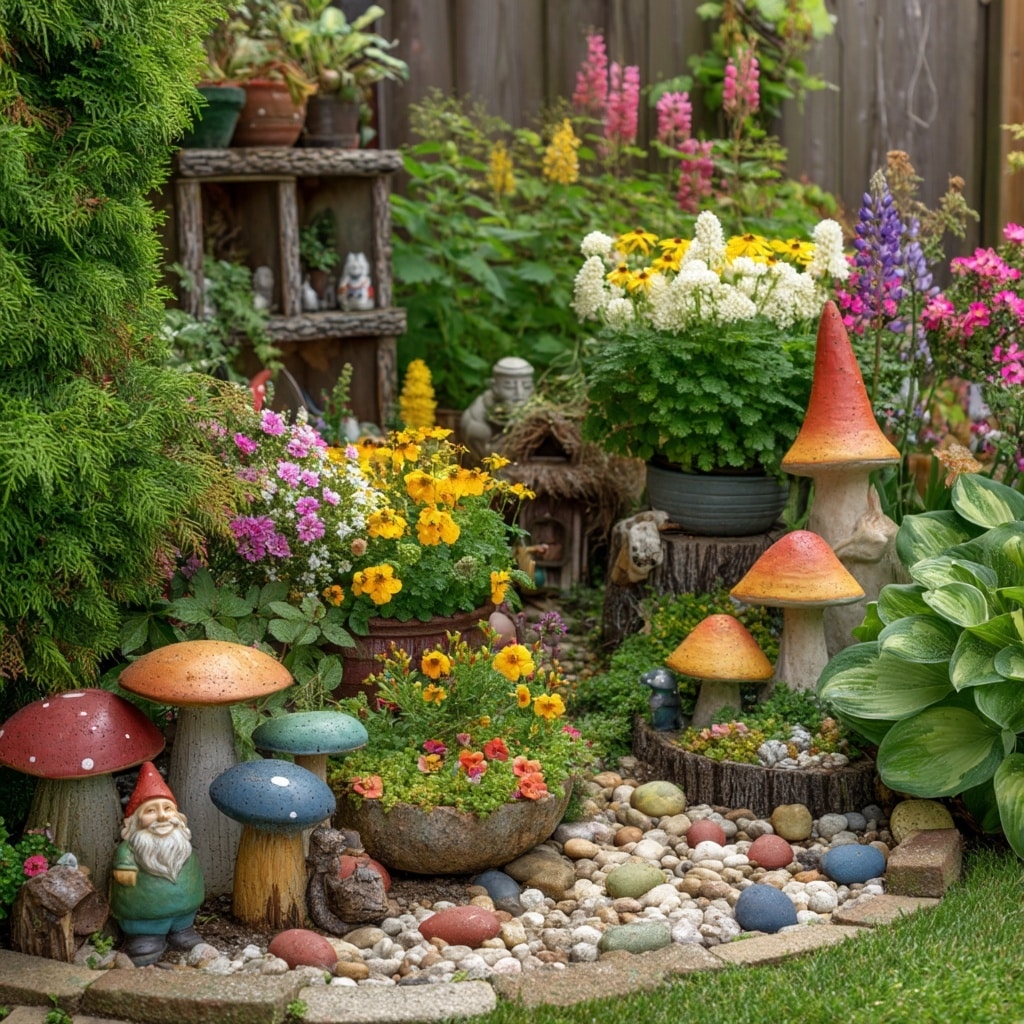
A touch of playfulness goes a long way in backyard landscaping. Whimsical accents—those small, unexpected details—can turn an ordinary garden into a space that sparks joy and creativity. These elements don’t need to be big or expensive; in fact, the most delightful ones are often simple and surprising.
Think of metal mushrooms peeking out from ivy, a quirky gnome tucked under a shrub, or even ceramic “feet” cleverly placed beneath a traditional urn. These features draw attention, make people smile, and add a personalized story to your outdoor space.
Whimsy also encourages exploration. Guests will naturally wander through your yard to see what’s hiding around the next bend. You might even repurpose household objects into art—like hanging teacups from tree branches, using old boots as planters, or crafting signs with garden quotes.
Just remember: moderation is key. A few unexpected touches sprinkled thoughtfully throughout your yard can elevate the atmosphere without overwhelming it.
6.Use Edible Plants in Your Design
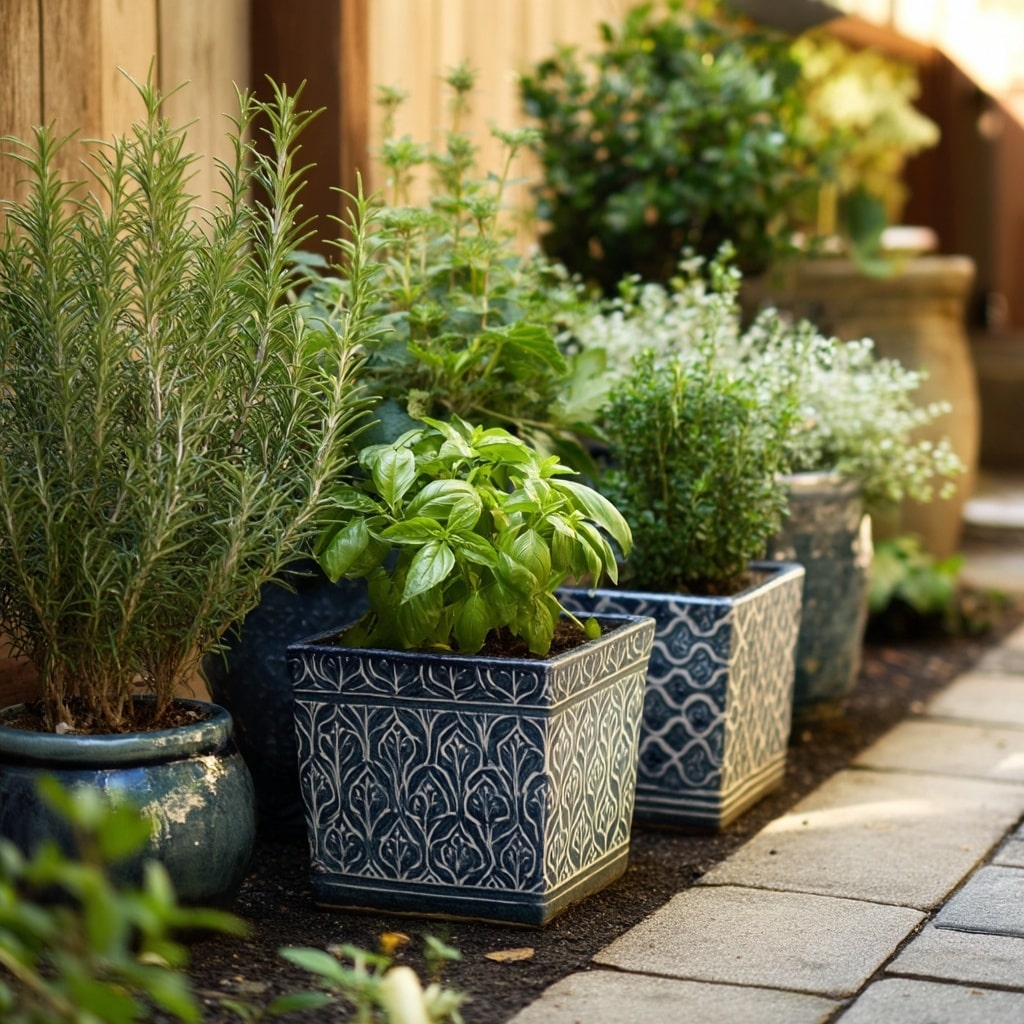
Blending beauty with function is a smart move in backyard landscaping, and incorporating edible plants is one of the best ways to do it. Herbs, vegetables, and fruiting plants not only bring vibrant greenery and fragrance to your yard—they also provide ingredients you can actually use in your kitchen.
Start small by planting herbs like basil, rosemary, or mint in decorative urns or ceramic pots. These look elegant placed near patios or along walkways and are incredibly convenient when you need a quick snip while cooking. Bonus: some herbs like mint are best kept in containers anyway, since they can quickly take over a garden bed.
For larger projects, consider integrating raised beds into your landscape design or mixing edible plants with ornamentals in existing borders. Colorful lettuces, purple kale, or chili peppers can be just as decorative as flowering annuals when arranged with care.
By adding edibles into the mix, you create a more sustainable, interactive garden—one that engages all your senses and rewards your efforts in more ways than one.
7. Trim Shrubs Creatively
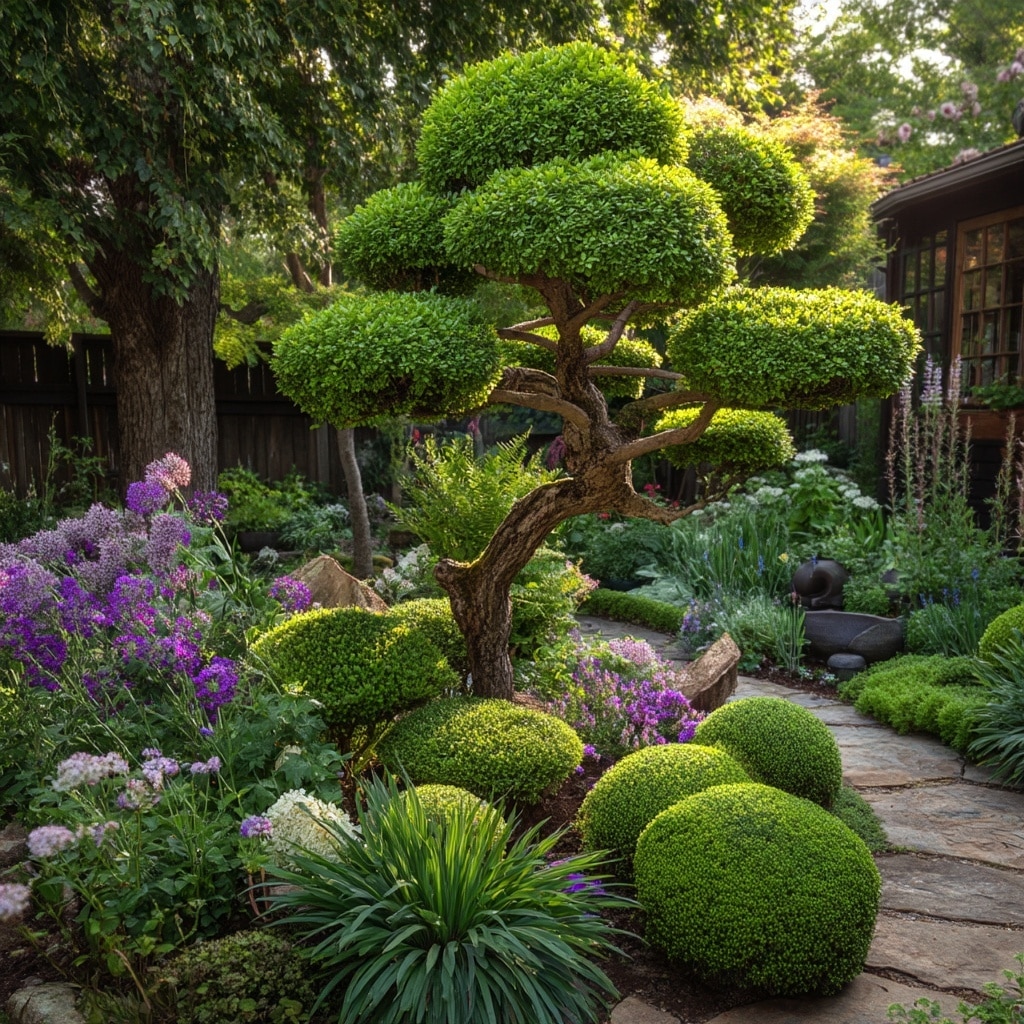
One of the most overlooked techniques in backyard landscaping is the art of shaping your shrubs and small trees. With a little time and pruning effort, even ordinary plants can be transformed into eye-catching features. Whether it’s a classic topiary shape or something more organic and sculptural, creative trimming adds personality and polish to your garden.
For example, removing the lower branches of a common holly or lilac can give it a tree-like form, revealing the trunk and highlighting the canopy above. This simple trick not only makes the plant look more elegant but also creates space underneath for smaller plantings or garden accents.
When trimming, focus on maintaining natural flow rather than forcing rigid shapes (unless you’re going for a formal look). Rounded tops and soft lines generally work best in residential landscapes, and they pair well with curved borders and relaxed planting styles.
Regular maintenance keeps everything tidy and healthy, but don’t be afraid to experiment. Shrubs aren’t just background—they can be sculptural elements that elevate the entire feel of your yard.
8. Take Your Time
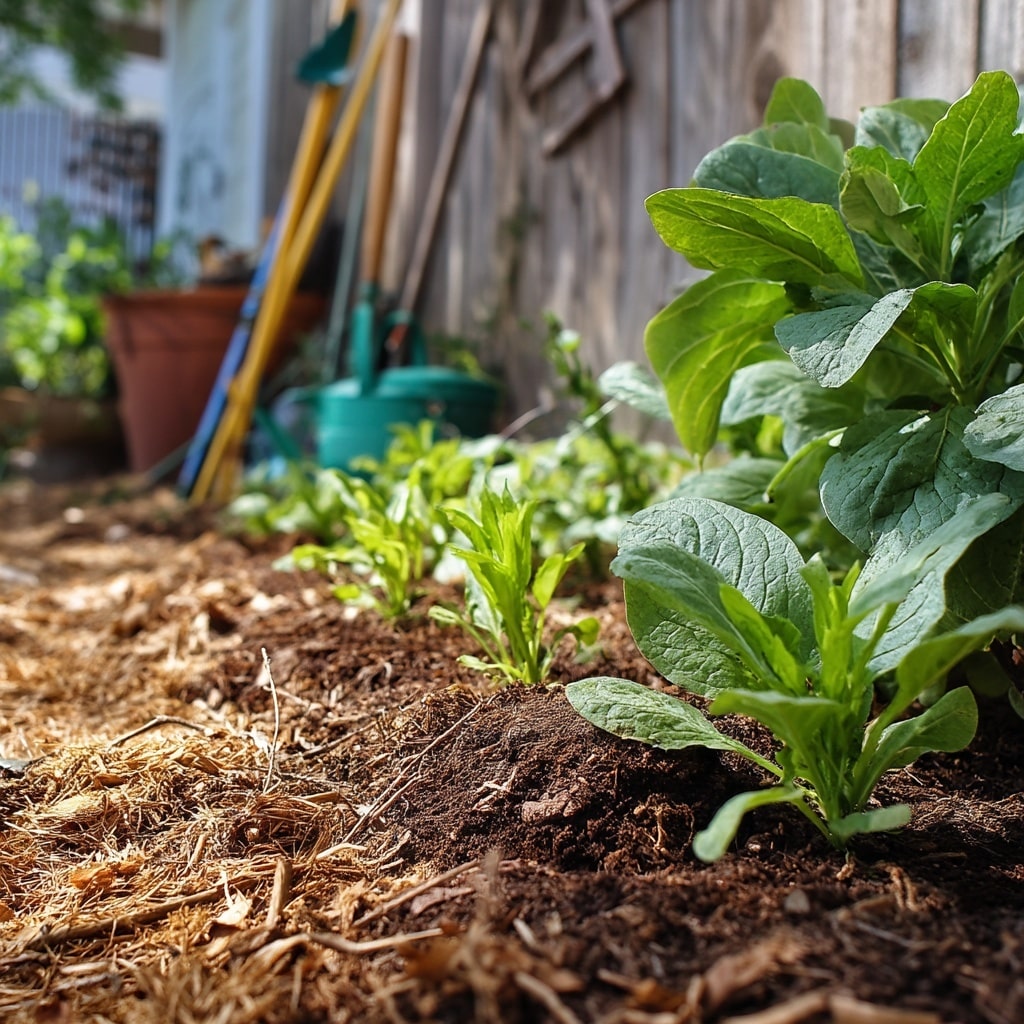
If there’s one universal truth in backyard landscaping, it’s this: great gardens don’t happen overnight. Whether you’re starting from scratch or slowly upgrading different areas, it’s important to embrace the process. Landscaping is as much about patience as it is about planning.
Building a beautiful outdoor space often takes seasons, even years. Plants need time to grow into their shapes, design ideas evolve, and sometimes you won’t know what works best until you live with it for a while. And that’s okay.
Rather than rushing to fill every corner, allow yourself the freedom to experiment. Focus on one area at a time, test how sunlight affects your yard, and add elements gradually. This slower pace leads to better choices—and less rework later.
In the end, a thoughtfully developed garden reflects care and intention. It becomes a space that truly feels like home—not just a finished project, but a living extension of your lifestyle.
Conclusion
Transforming your outdoor space doesn’t require a professional crew or an endless budget—just thoughtful planning and a bit of creativity. These eight ideas for backyard landscaping can help you build a space that’s beautiful, personal, and functional. From curved borders and whimsical accents to edible plants and artistic pruning, each tip brings its own charm and purpose. Take your time, enjoy the process, and let your backyard become a reflection of the home you’ve created inside.


